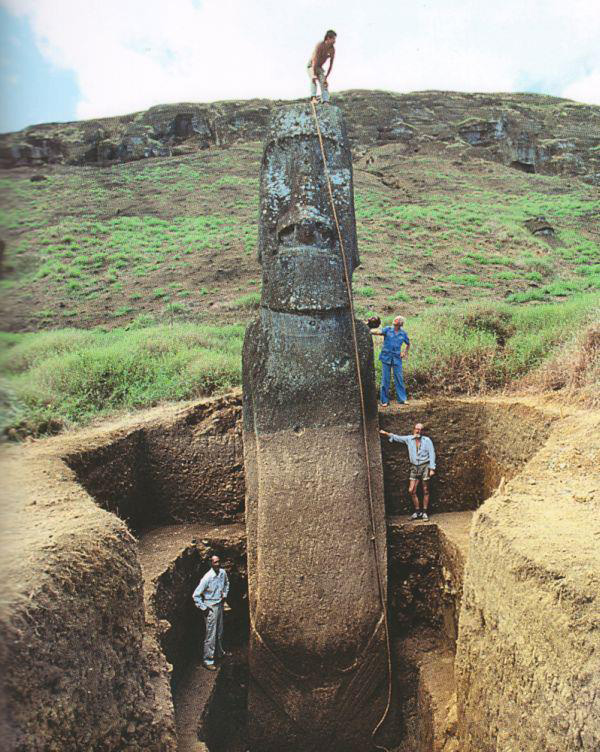from Mysterious Places & Red Ice Creations
October 28 2011

Almost everyone has seen the iconic images of the Easter Island statues staring silently out from the hillsides. For years I thought these were the only Moai on the island. I knew nothing of the statues erected on ahu or the fallen moai at the other sites. Seeing these pictures many people have come to believe that all Moai faced the ocean while it is the exact opposite that is true. With the exception of Ahu Akivi all erected Moai face inland. It is believed they were positioned that way to watch over the villages. At Rano Raraku the statues face away from the crater.
The fact is these statues were not meant to have stayed in this place. The Moai that you see half buried on the sides of the volcanic cone of Rano Raraku were pieces waiting to be transported to ahu around the island. The Moai that you see sticking up out of the ground have bodies that extend down underground 20 – 40 feet, all the way to the waist. Centuries of erosion from the slopes above have covered all but the tops of these giants – the largest Moai ever constructed. One of the unfinished moai, completely carved but not removed from the crater wall, is a staggering 70 feet in length. Many doubt this statue could ever have been raised successfully. Giving their ingenuity and obsession, I believe they would have eventually.The slopes of Rano Raraku are filled with eye-less moai – several hundred circle the crater in various stages of construction.
Many have a more detailed and finished look than the moai erected on the island’s ahu. There are some that disagree that these statues were finished pieces waiting for transport and believe that they were never meant to be move from the slopes surrounding their birth place. Perhaps it was a “Moai Showroom” of sorts where local leaders could come and pick out their favorite design!
Thor Heyerdahl’s team was given one day in 1987 to excavate and measure the full length of the moai. Its regal head tapers into a long thin body with carved tattoo and loin cloth relief’s on its surface. It has a distinctly phallic shape to it and some have proposed that all the moai were purposely designed around a phallus shaped form.
The interior of the caldera contains many finished and unfinished moai as well. Erosion has covered many nearly completely and it’s possible more lay beneath the ground, covered by hundreds of years of erosion. The potmarked walls from which the moai where carved can clearly be seen in this photo taken of the interior of the Rano Raraku caldera just above the crater lake.
Related articles
- Easter Island Statue Project (eisp.org)
- Easter Island and the Moai statues (allysadventuresinwonderlands.wordpress.com)
- 180 degrees South – Easter Island, Chile (travelpod.com)
